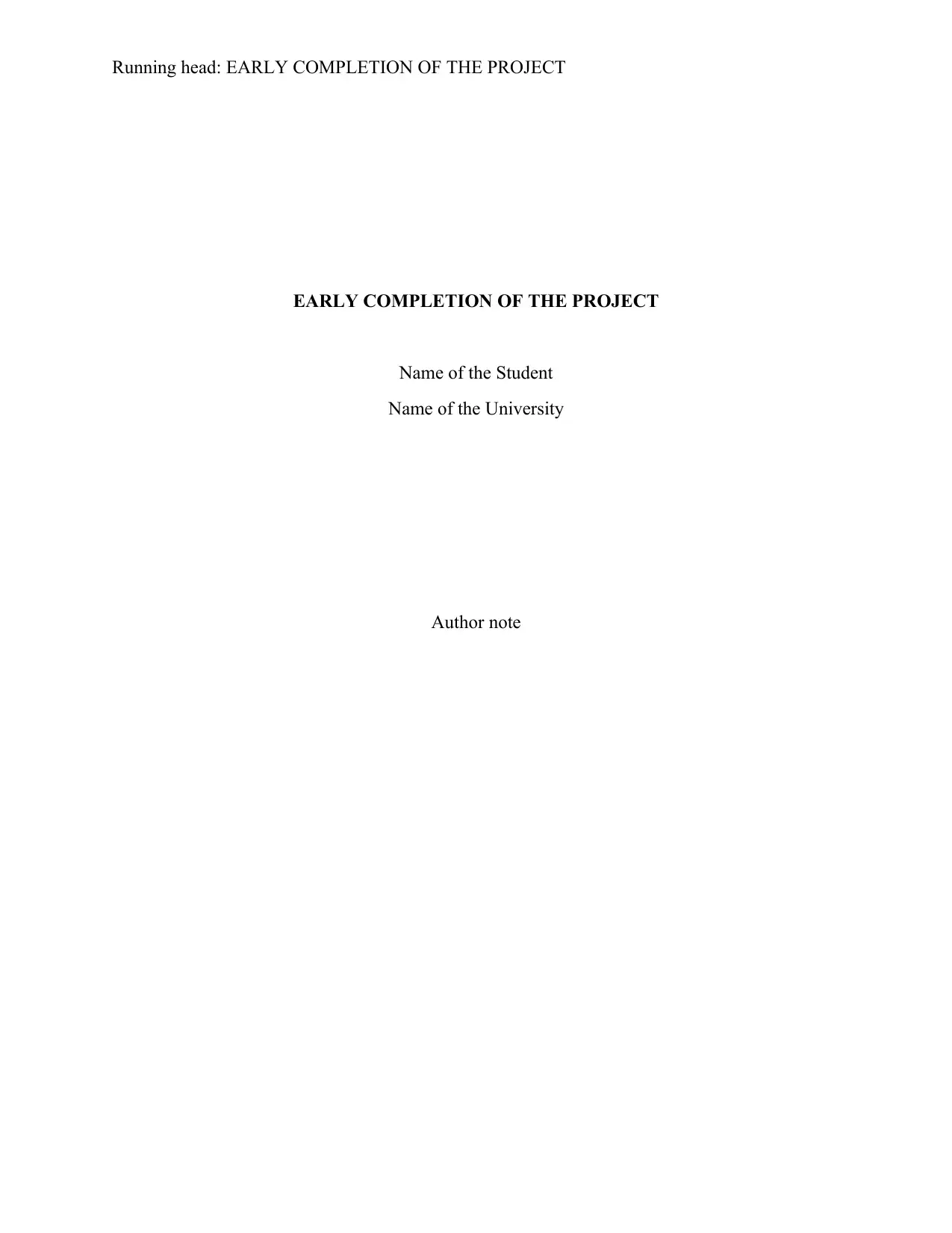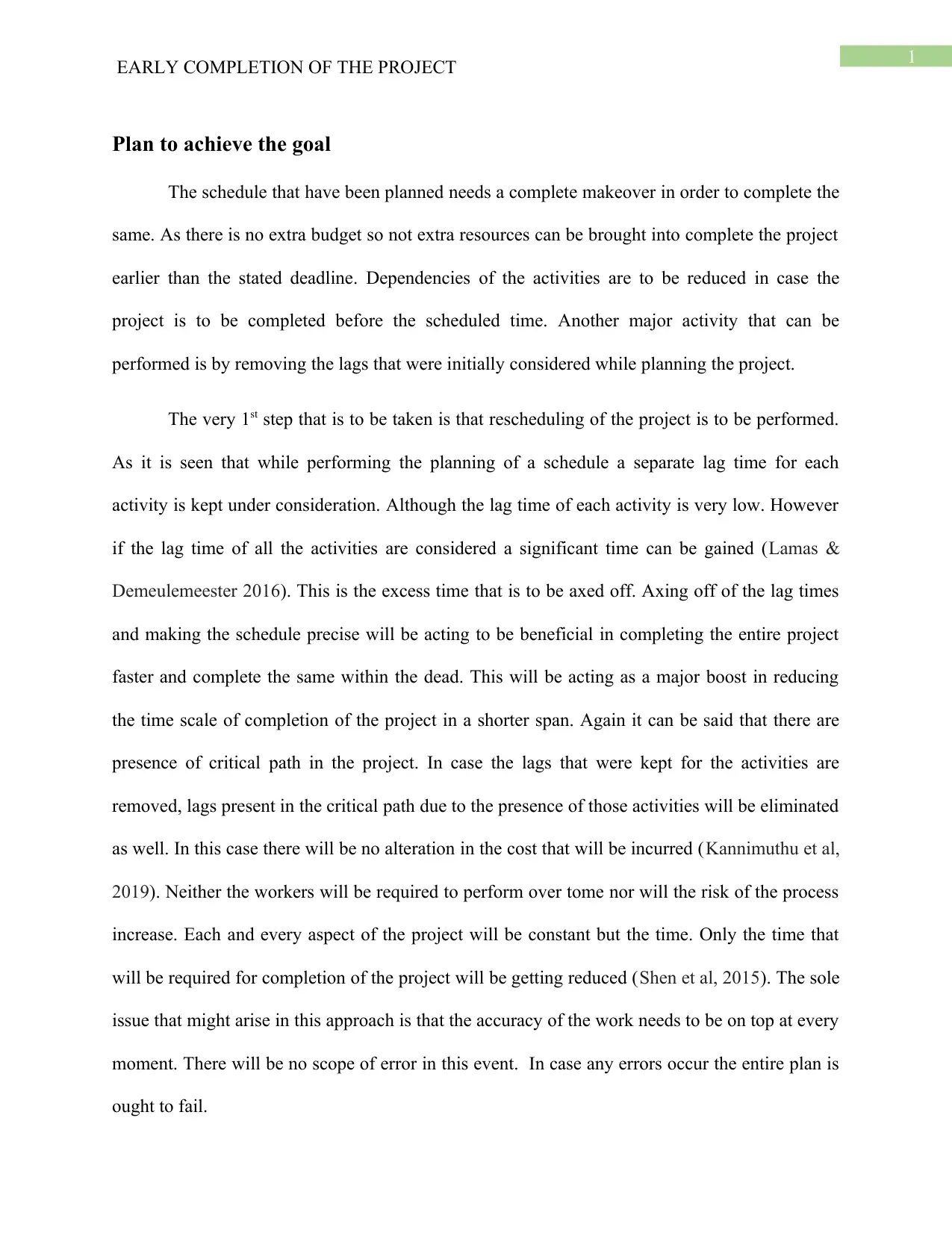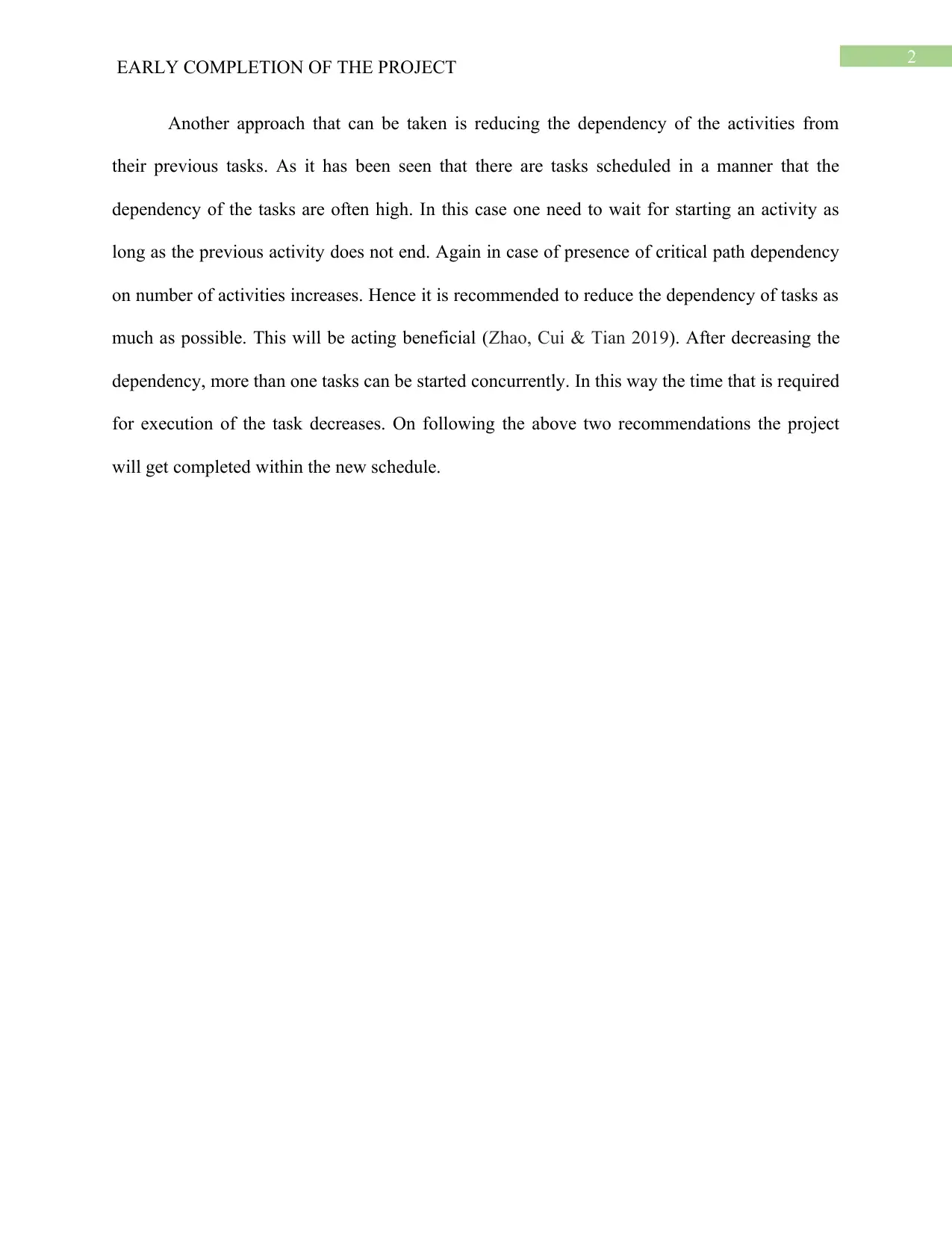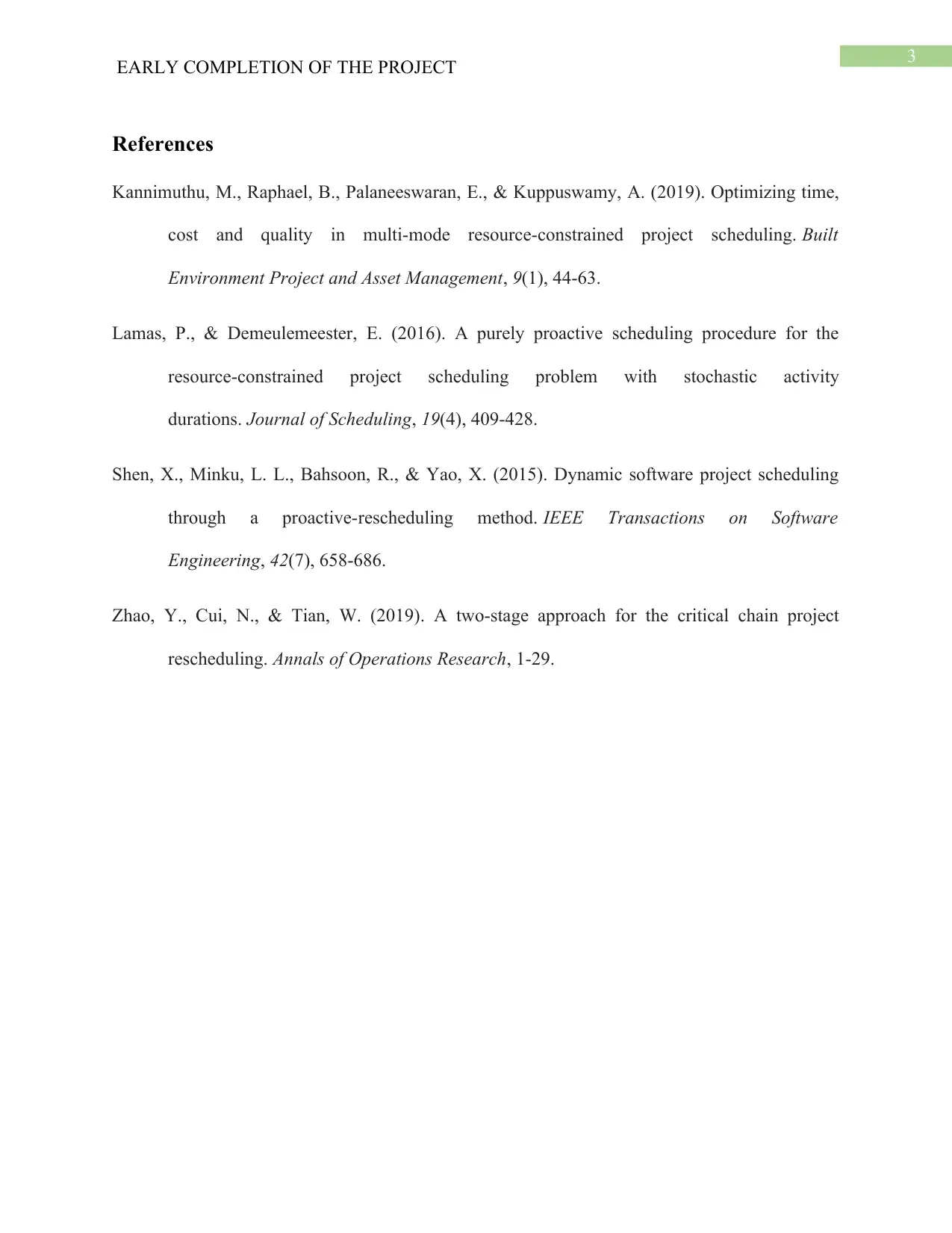University Project Management: Early Completion Strategies Report
VerifiedAdded on 2022/10/09
|4
|754
|16
Report
AI Summary
This report focuses on strategies for the early completion of a project, addressing the need to revise project schedules to meet deadlines efficiently. The author suggests two primary approaches: rescheduling the project to eliminate or minimize lag times associated with each activity, and reducing task dependencies. The first approach involves a detailed examination of the project schedule, identifying and removing excess lag times to expedite completion. The report emphasizes that this method can be achieved without additional costs or increased risks, provided the accuracy of the work remains high. The second approach centers on minimizing the dependencies between tasks, allowing for concurrent execution of activities and thereby reducing overall project duration. By implementing these strategies, the report aims to provide a framework for completing projects within the revised, accelerated schedule. The report includes references to relevant academic literature on project management and scheduling.
1 out of 4











![[object Object]](/_next/static/media/star-bottom.7253800d.svg)